We’ll see you in there.
Connect to customize your food & drink discovery.
By signing up you agree to our Terms of Service and Privacy Policy.
Wonton Hut

Eddie Yeung, founder and head chef of Wonton Hut, is fully prepared to thwart the expectations of customers who walk into his brand new minimalist establishment on Queen Street West.
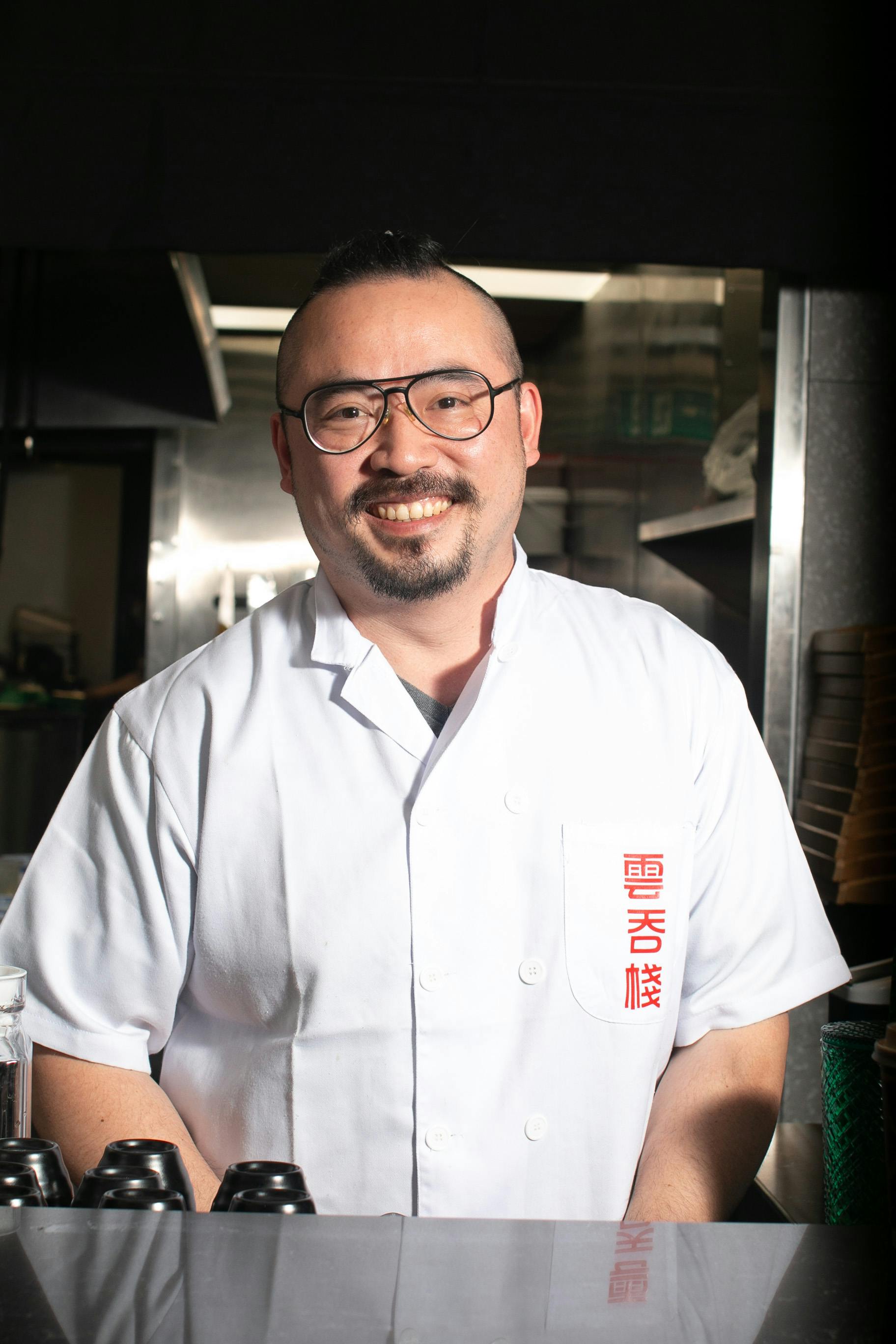
Yeung has his work cut out for him because the expectations are deeply ingrained.
After all, in Canada's collective culinary consciousness, wonton soup is as beloved, ubiquitous, and gastronomically disparaged as chow mein, chop suey and eggrolls.
That many take-out Chinese-Canadian restaurants all but give wonton soup away -- (it's often offered as a freebie in those $6.99 lunch specials) -- has ensured its popularity while undermining its reputation. In recent years, wonton's stature has sunk, at the expense of what Toronto-based Chinese food connoisseur Charles Yu refers to as "trendy noodles," such as Japanese ramen and Vietnamese pho.
Eddie Yeung concurs, pointing out it's no surprise that fashionable ramen spots have taken the city by storm. "It's a cool thing to do and the profit margins are higher; there's just more money to make," he explains. "With wonton, people expect a low price. But the cheap cost is also associated with lower quality." As a result, many non-Asian diners don't take wonton as seriously as they should.
Yeung's about to change that. Wonton Hut's Queen West location represents a serious and single-handed effort to resurrect wonton. Because despite the aforementioned ubiquity of wonton soup, it's telling, ironic and actually quite monumental that Wonton Hut is downtown Toronto's first wonton-centric restaurant outside of Chinatown.
Yeung clearly understands the task he's set for himself; "I'm not here to introduce people to wonton, but tore-introduce it to them. I want them to know what a wonton noodle is. It's very classic. If you were going to pick a food to represent Hong Kong, that would be wonton."
Few chefs seem better equipped to undertake wonton's "rescue" than Yeung. Born and raised in Hong Kong, young Eddie loved eating wonton as a boy, so much so that, by his teens, he was apprenticing with renowned noodle chefs. One of them, his sifu (master/teacher), was co-owner of a Michelin-starred restaurant where Yeung learned the trade secrets of making wonton noodles and broth. After immigrating to Canada in 1993, he honed his technique at a Richmond Hill restaurant run by his sifu, where he served as head chef for eight years.
In 2009, Yeung opened his own restaurant, the original Wonton Hut, in Markham. Immensely popular, the modest Mom-and-Pop-style eatery routinely makes Best of Toronto lists compiled by the likes of Eater and Toronto Life. It's a go-to institution for many in the GTA's Chinese community, who appreciate the authenticity and high quality of the home-style comfort food.

Yet, Yeung has long aspired to open a Wonton Hut outside of the Asian community where he could present classic wonton to an unschooled but open-and-willing-to-try-anything crowd. No place in metro Toronto struck him as more strategically ideal than the strip of Queen West between Bathurst and Trinity Bellwoods "because of its diversity… and also because I also just really like the vibe."
Open only during the day, Markham's Wonton Hut is located in a strip mall on Highway 7. According to Yeung, customers (roughly 80 percent of whom are Asian) inevitably drive to the restaurant, order what they know they want, and devour it in 15 minutes.
The Queen Street restaurant is completely different. It's currently only open in the evenings. It's also all about foot traffic, with people constantly ambling by and often dipping in out of sheer curiosity (Yeung estimates the Asian: non-Asian ratio is 20:80). Once inside the soothing minimalist space, customers are lulled into staying a while.
Outfitted in neutral grays, the narrow dining room is cozy yet uncluttered. One wall is crisscrossed with slender sticks of blond wood arranged in geometric patterns. Another blossoms with green plants. A shiny black counter leading to the kitchen is stacked with a Warhol-esque arrangement of evaporated milk cans. Although they Pop as art, they're used to prepare traditional cold milk tea made from a base of freshly brewed Ceylon black tea. Those who prefer citrus to lactose can opt for equally traditional (and refreshing) chilled lemon tea.
It's a relaxed, unfussy space, with seating for 18, where you won't necessarily want to bolt after your meal. Instead, you might want to chill with a Tsingtao beer or two and even strike up a conversation with the staff, which Yeung actively encourages. "Here we have more time to talk to people, to explain the dishes, but also just to talk."
Wonton Hut's intimate scale extends to all aspects of the restaurant. "To me a hut is a really small space," confesses Yeung. "I like small restaurants because I think you can really focus on detail, on quality. Our small kitchen, our small menu, means we can be precise in what we do."
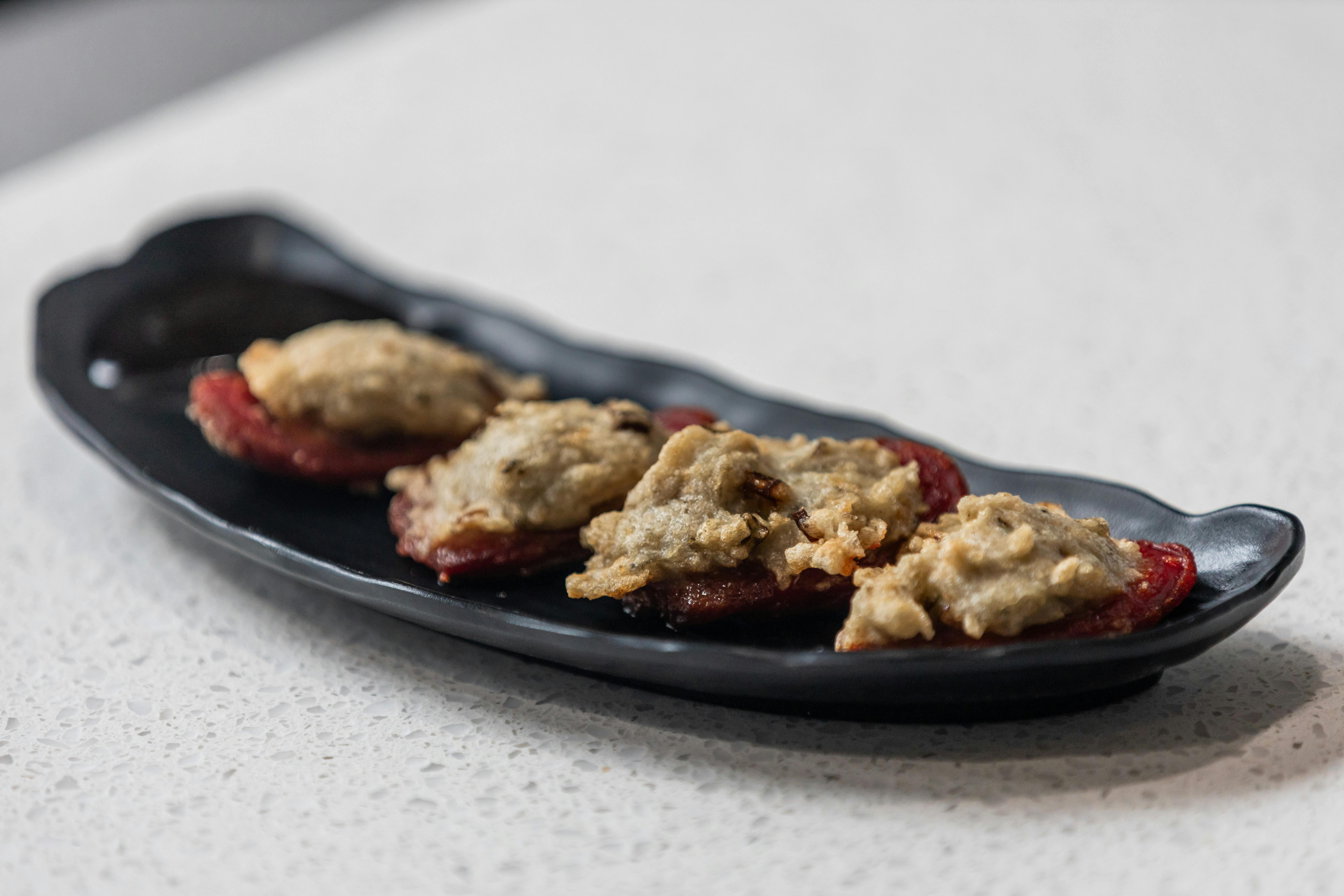
Referring to Wonton Hut's menu as "small" is an overstatement. Aside from the drinks menu (the two teas and Tsingtao), the current food menu consists of three dishes, four if you include the starter -- fried shrimp and pork wonton with sweet and sour sauce -- and you definitely should.
Served, like all the restaurant's dishes, in traditional Chinese white and blue porcelain bowls, the quartet of delicately fried wontons sit invitingly in the centre, flanked by four paper-thin, equally crisp wonton "skins." An accompanying smaller bowl contains the house-made sweet and sour sauce, swimming with a festive grouping of green and red peppers and golden chunks of pineapple.
Yeung confesses that he's messed with the authenticity of this beloved Hong Kong snack by stuffing the wontons with tender shrimp and pork, instead of adding them to the sauce. You'll undoubtedly forgive this trespass. When the sweet-and-sour-slathered wonton hits your mouth, the simultaneous sensory eruptions of fleshy and fruity, hot and tangy, sweet and crispy, will reassure you that you're getting the full-on taste and textural experience.
As addictive as they are, the fried wontons are only a prelude to the main event wontons, the wontons that built -- and justify -- the Hut, the wontons that Yeung has spent the last 25 years of his life perfecting.
Made fresh daily, they arrive in a steaming bowl of clear broth, bobbing atop a bed of thin egg white noodles, showered with green scallions and yellow chives. Immaculately folded and gorgeously plump, their transparency hints at the deliciousness within.
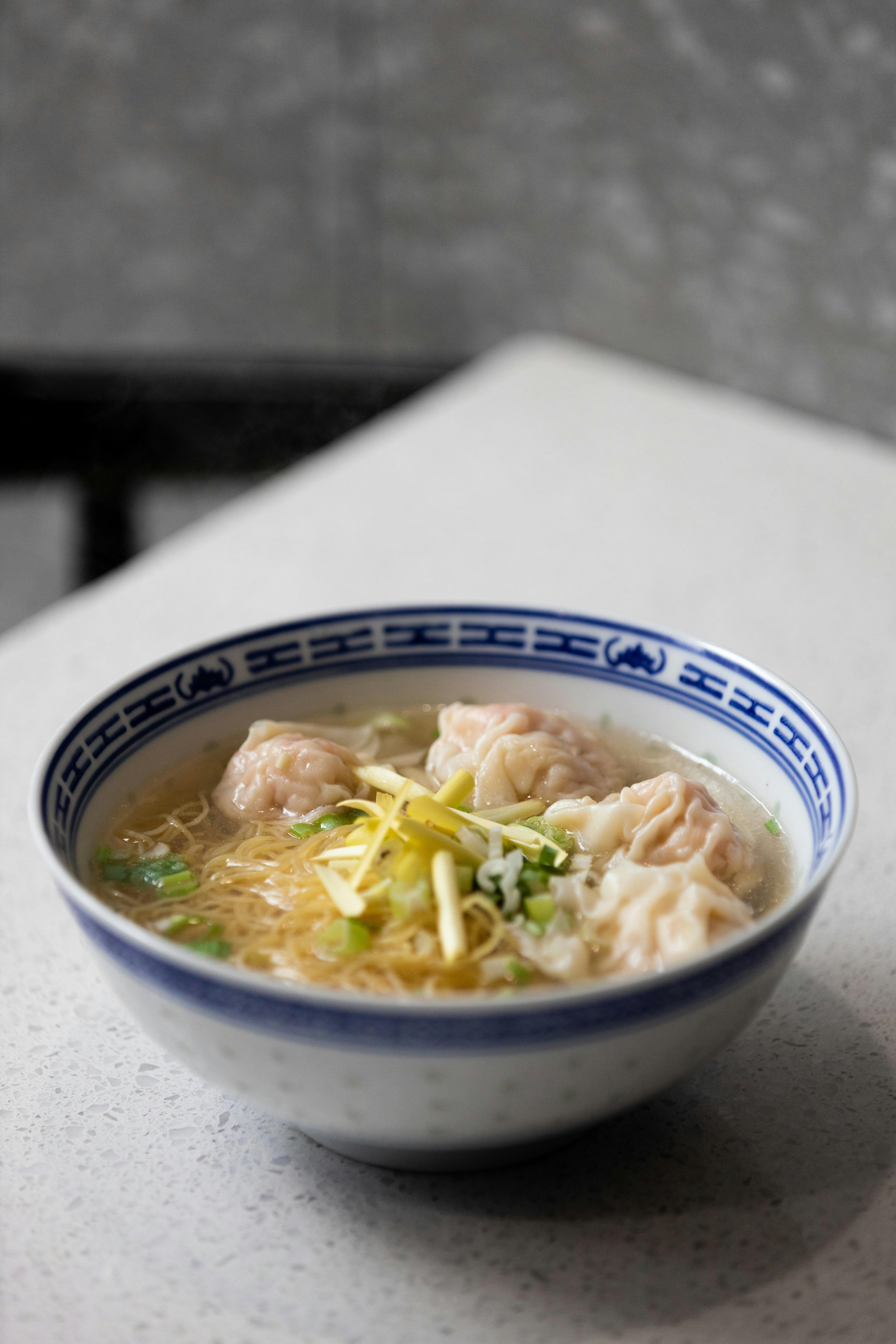
The visuals aren't deceiving. Yeung sticks to the traditional filling of shrimp and pork. But he goes to town with the shrimp, using top-quality jumbo tiger shrimp from Thailand, to which pork is added as a meaty accomplice. For a distinctive flavour twist that ties all the ingredients together, he mixes in shrimp roe and flakes of dried and toasted tilefish (similar to flounder).
Of course, the wonton itself is only half of the equation: there's also the broth. Yeung has spent years fine-tuning his stock, which makes use of the aforementioned tilefish along with dried pork and vaguely sweet, thumbnail-sized Thai river shrimp. The broth's clear, transparent aspect is deceptive. There's a lot going on here: layer upon layer of clean but subtle flavours that merge into a harmonious, insanely slurpable whole. Perfumed and complex, it leans more towards a tea than a soup.
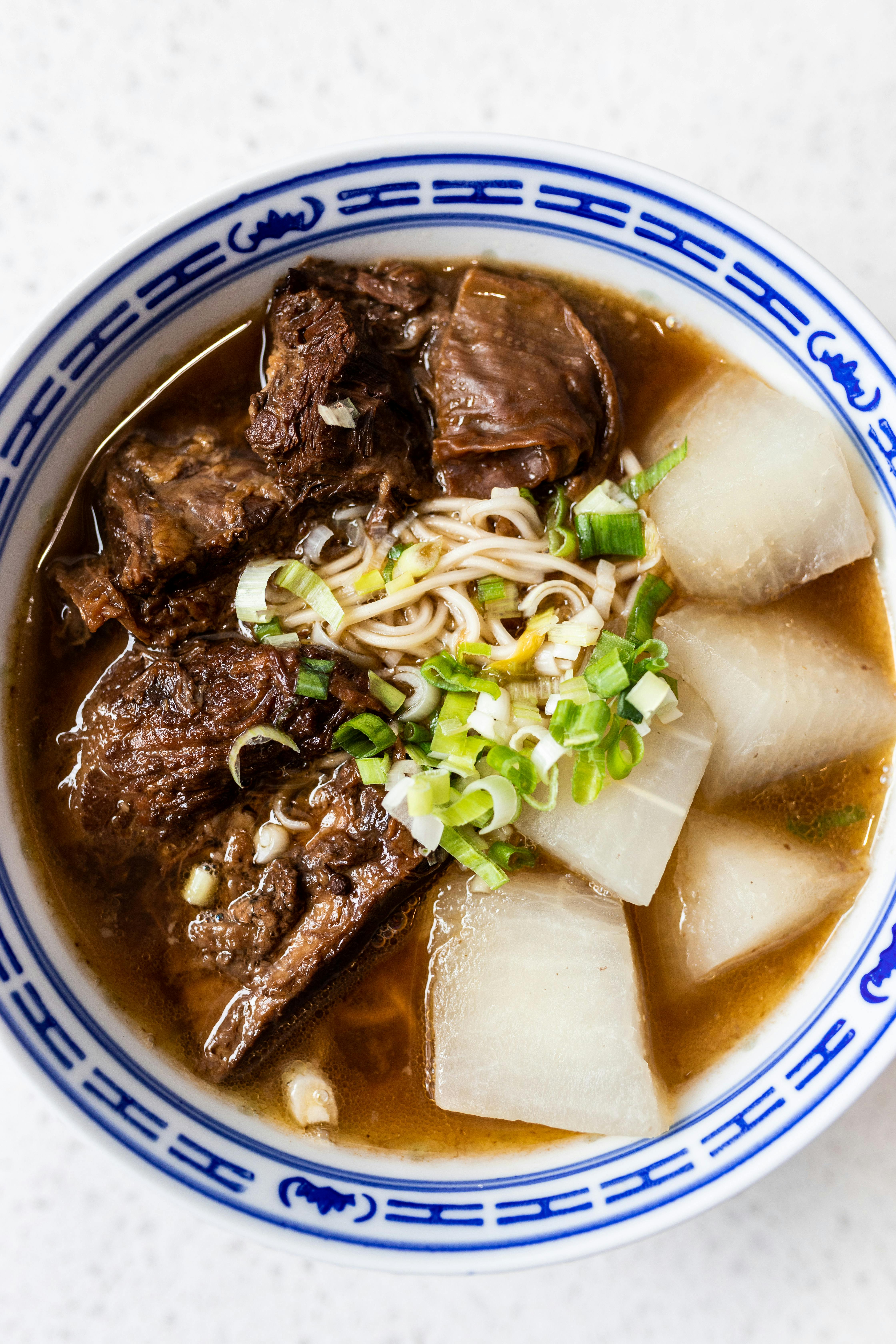
Also served with noodles and broth is the lesser known, but no less traditional brisket. In keeping with Hong Kong dictates, Yeung uses beef that contains a little bit of tendon and a good portion of fat. Although he's well aware of Torontonians' fixation on leanness, he's adamant about fat's flavour-enhancing properties. Given time and multiple tastings, he hopes that potentially leery customers will come around.
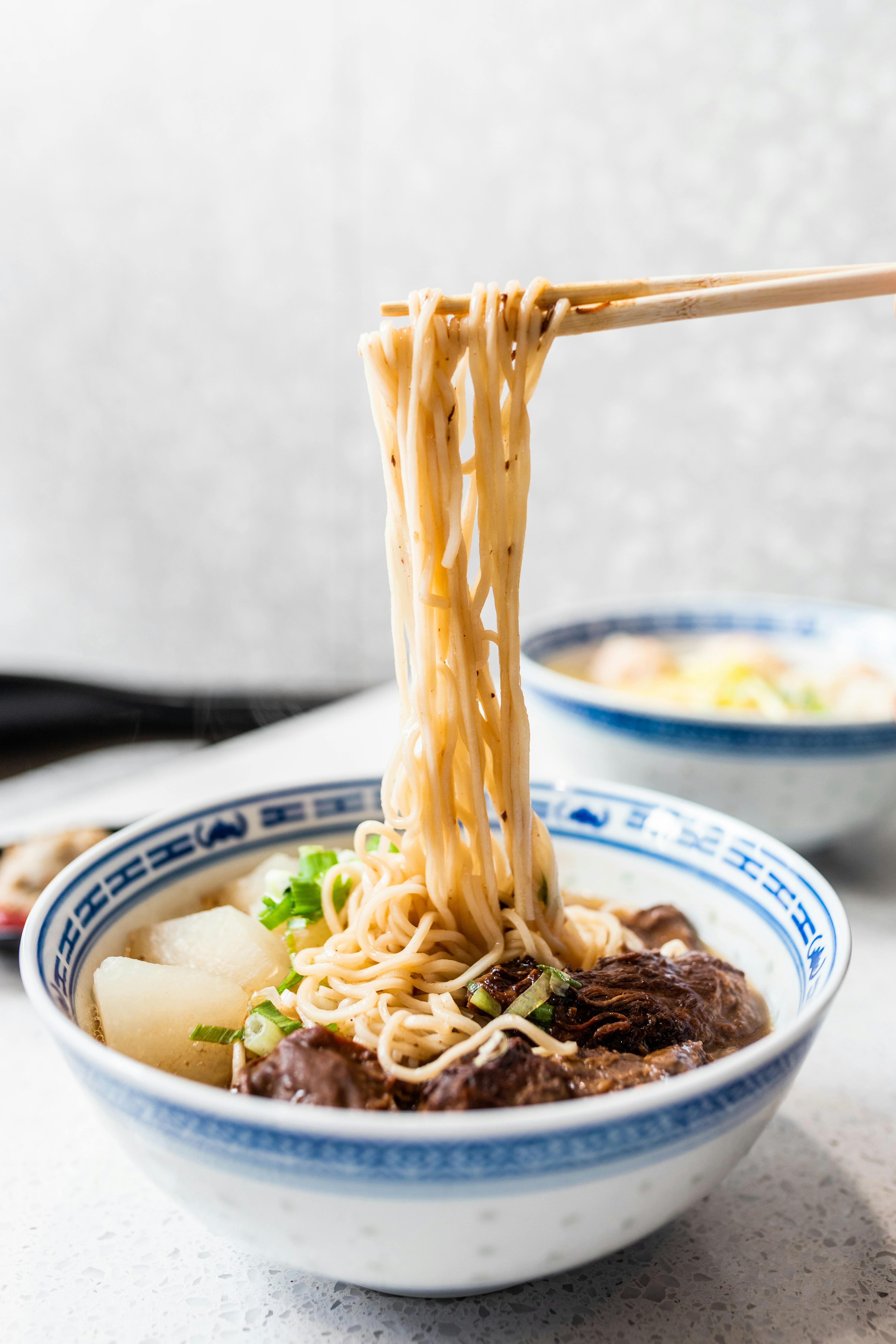
Even before the brisket hits the broth, it's pretty hard to resist. This is because after marinating in a sauce composed of 15 ingredients -- among them Szechuan pepper, cinnamon stick, black bean sauce, Hoisin sauce and Chinese fermented tofu -- the brisket is slow roasted for six hours, encouraging the marinade to seep thoroughly into the meat. The intensely flavourful and tender result pairs well with accompanying broth-cooked daikon.
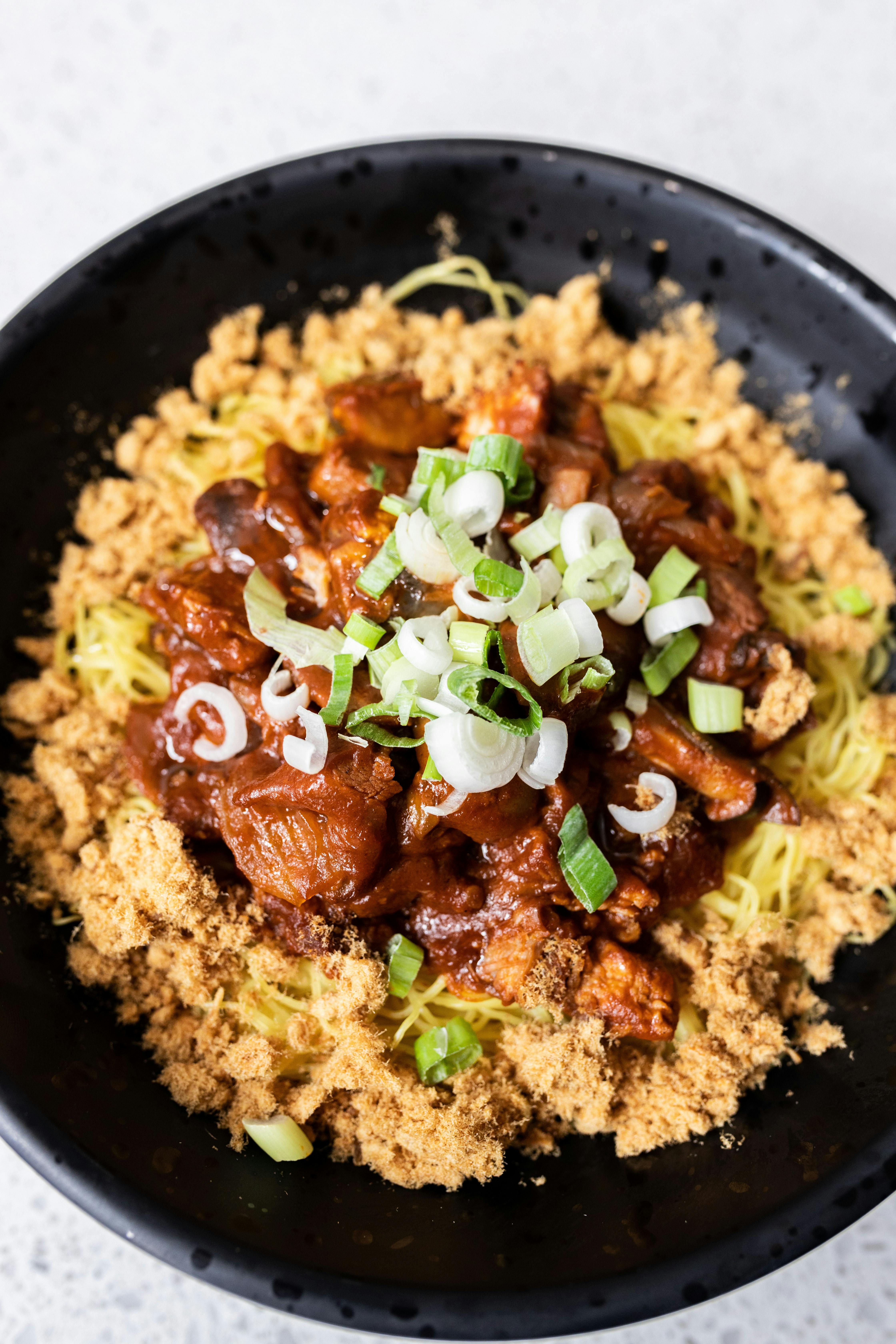
Wonton Hut's laser-focused menu doesn't leave a lot of room for vegetarians. The delicious exception to the carnivorous rule is another Honk Kong classic: spicy cold noodles. Tossed with bright julienned carrots and cucumbers, egg white noodles are seasoned with a pungent sauce made from sesame paste, roasted onions, black vinegar and house-made chili oil, whose slow-building heat emanates from bird's eye chilis and Szechuan mustard (and can happily be purchased separately). The noodles and crisp veg combined with the vinegar's acidity are unexpectedly refreshing. But before you lapse into a complete state of chill, there's that fiery little kick at the end.

Despite Yeung's commitment to the specialties he's already mastered, the move to a new space and location has set his creative juices in motion. As soon as he's settled in, he'd like to begin introducing some Hong Kong street food specialties to the menu. He's thinking about curried fish balls, egg waffles, maybe even some vegetarian dumplings. Yet he'll never stop focusing, first and foremost, on wonton.
"If you get to a point where you're satisfied with what you're doing, then you'll never improve," muses Yeung. "I've been making wonton for 25 years; the only challenge for me is to make it better."
That said, if you think Yeung's passion is limited to getting more people to eat authentic wonton, you've underestimated him.
"I want more people to know how to make wonton." declares Yeung, admitting that these days he's already thinking about the future and the next generation. "Imagine if I'm the only one downtown making wonton. After I close who's going to make it?"
"So for me it's a matter of teaching someone to cook it so they can open their own wonton restaurant. To me, that would be the happiest thing -- to see more wonton restaurants open outside of Chinatown. Because eventually, one day, the hope I have for my kids is that when they walk down the street they'll find a lot of wonton noodles to eat."
Recommended For You